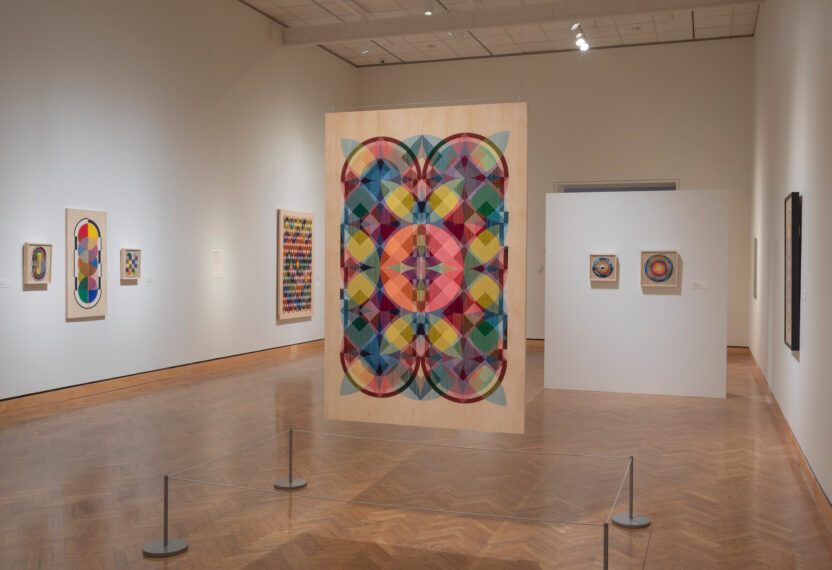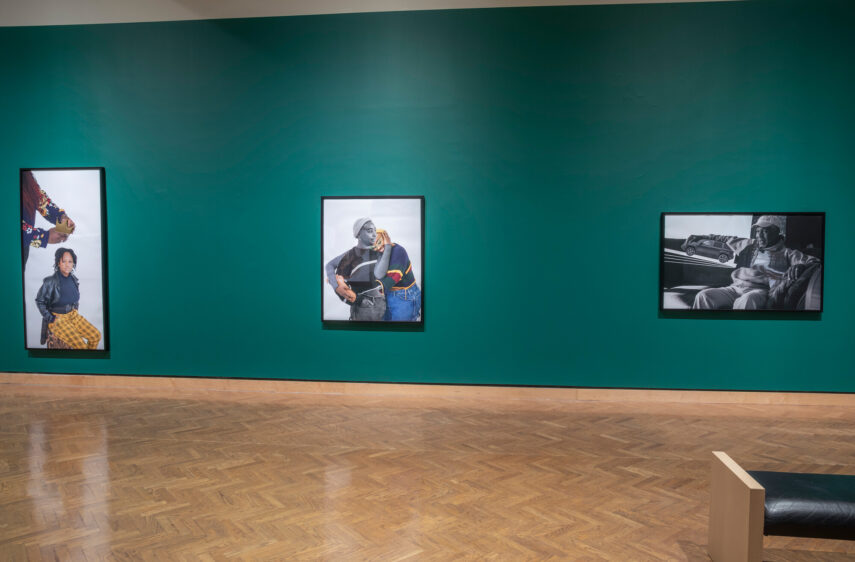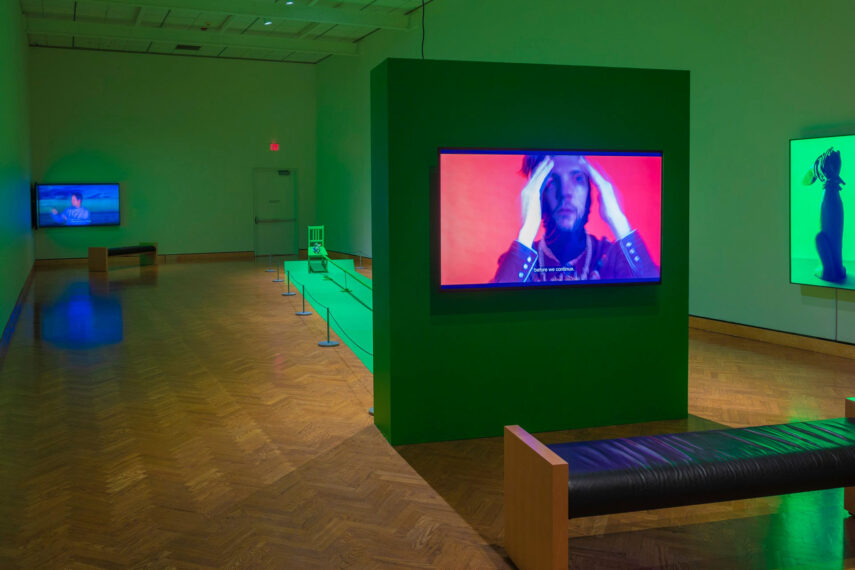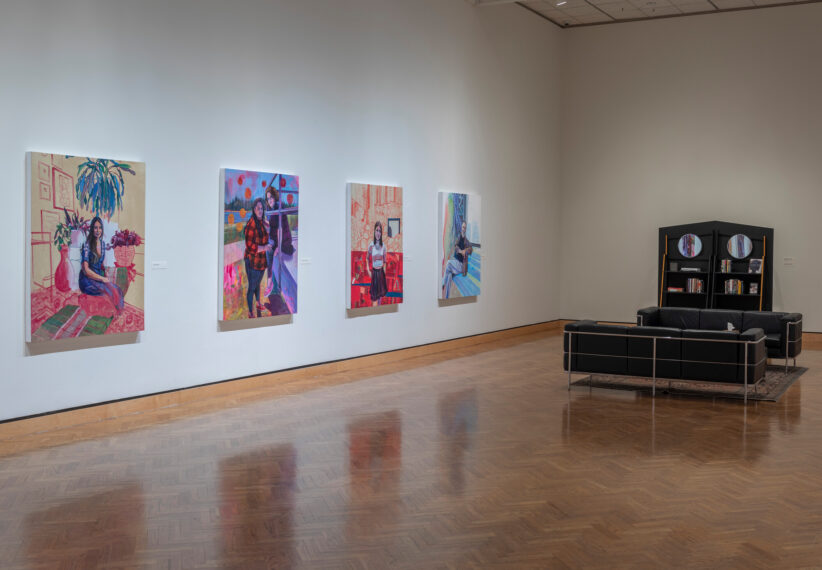Minnesota Artists Exhibition Program Application Guidelines
Overview
What Is the MAEP?
The Minnesota Artists Exhibition Program (MAEP) is a juried art exhibition program. The MAEP highlights the diverse breadth of artists and artwork made in Minnesota. Artists who live and work in the state of Minnesota can apply to an Open Call via Submittable. Open Calls are held in February, June, and October every year. A panel and Mia staff select one application per Open Call.
Selected Artists receive a total of $13,500 and an exhibition in U.S. Bank Gallery at Mia. Visit MAEP’s web page for more information.
What Are You Looking For?
The program seeks to support emerging and mid-career artists who need support to complete a body of work, display a body of work, or push a body of work to the next stage. Artists should have a firm understanding of how long it takes to make the work they are proposing, have previous exhibition experience, and be able to commit to the exhibition requirements.
Artists do not need a degree in art or have sold artwork to apply. The program is not open to degree-seeking students, people under the age of 18, and permanent Mia employees. For more information, see a list of rules.
How Do I Apply?
Visit the MAEP website to learn more about submitting your application. The application requires 10 work samples, an artist statement, an exhibition proposal, a CV, and a floor plan. It also includes tips and suggestions for first-time applicants!
Questions?
Book a 20-minute virtual appointment with the supervisor of the MAEP or email the program.
Tips for a Successful Application
Written by MAEP artists | Updated August 2024

View of the exhibition “Tia Keobounpheng: Revealing Threads,” July 22–October 29, 2023.

View of the exhibition “Jovan C. Speller: Nurturing, and Other Rituals of Protection,” March 19–June 26, 2022.

Installation view of “Joshua McGarvey: POSTURING,” July 23–October 30, 2022.

Installation view of “Aaron Dysart: Passage,” November 20, 2021–February 27, 2022.
General Advice
Visit the MAEP website to view open calls and updates.
One application is selected per open call.
Proposals are juried on four criteria: clarity, competency, intention, and inclusion.
Jury Process: All applications are scored between one and five before meeting to select and rank three proposals. The selected application is confirmed by Mia. Decisions are announced via email six to eight weeks after the deadline.
Familiarize yourself with the program. Attend the exhibitions, go to the artists talks, and speak with past artists about their experiences. Spend time at Mia and the U.S. Bank Gallery, which houses the MAEP.
Review the program restrictions (below) before applying. Applications that violate the restrictions will be disqualified. If you were disqualified, you are encouraged to revise and reapply to the next open call unless notified otherwise.
The MAEP only accepts Applications via Submittable. Emailed and mailed applications will not be accepted.
Submittable is designed to work on Chrome and Firefox browsers. Make sure your browser is updated before applying.
Changes cannot be made to an application after it is submitted.
Be clear by using concise, direct language. (e.g. phrases like “I will…” rather than “I would like to…”).
Your voice is the most powerful one! Do not use quotes or comparisons to other artists or writers.
Evaluate costs and needs. A budget is not required, but your proposal should be realistic for your practice and capacity. Do not propose a project that will exceed your physical or financial capacities.
You do not have to “go BIG” for the MAEP. Small-scale work can hold the space.
On average, the MAEP selects less than 1% of all applicants. You are encouraged to reapply if you were not selected.
Get feedback before applying to the MAEP. Invite other artists, critics, and friends to your studio. Listen to consistent comments and revise your application.
Questions? Book a 20-minute virtual appointment with the supervisor of the MAEP or email the program.

Installation view “Leslie Barlow: Within, Between, and Beyond,” July 16–October 31, 2021.
Program Restrictions
Mia adheres to state and federal laws, guidelines, and best practices within the museum field to ensure visitor safety and artwork preservation. To that end, the program has strict restrictions and protocols that must be adhered to. Closely read the following restrictions and guidelines before applying to the program.
To receive the MAEP, artists must reside within the state of Minnesota. Mia employees and degree-seeking students are not eligible, regardless of program or degree. State residency is required for all artists listed in groups or collectives applying to the program.
Weapons are banned from museum premises for the safety of Mia’s visitors. In addition, no live ammunition, gunpowder, or explosives will be permitted as components of works of art.
All accepted proposals must meet the Minnesota state guidelines and restrictions for electrical use and comply with ADA guidelines. Review the state’s accessibility guidelines.
Mia houses a historically rich and diverse collection of objects that span millennia. Because of our collection’s fragile, historical nature and for visitor safety, Mia will not accept proposals/artworks containing mold, untreated dirt, found objects, spores, living flora, and fauna. Artworks susceptible to mold or pest infestation must receive treatment before and after the exhibition. Use of Mia’s collection artworks is not permitted.
Works must be ready to be assembled and installed four months before the exhibit opens. “Ready” includes but is not limited to attached hanging hardware, framed and/or mounted, data/files transferred or on media players, mounting hardware prepared, and/or assembly components attached/prepared.
Construction of objects will not be permitted within the galleries. Mia is not equipped to assist with hazardous chemicals, such as cutting wood or metal, leafing or coating materials, soldering, ventilation, etc. Basic assembly of sculptures or installations is permitted with prior approval. Instructions and any necessary parts and hardware for assembly must accompany the objects.
To ensure parity for all MAEP artists, no applications proposing permanent gallery changes will be accepted. Exhibitions must be able to be removed within two days of closing an exhibition.
The artist will work with Mia’s exhibition teams to confirm the availability and capacity for the exhibition’s needs and design. All requests must be placed six months before the exhibition’s opening date. Exhibition needs include but are not limited to painting walls/pedestals, lighting needs, exhibition furniture, media players/monitors/projectors, etc.
Inquire one month BEFORE applying if you are considering using materials such as found objects, food, vehicles/boats, liquids, earth/dirt, live plants, or other prohibited materials (listed above). Installations incorporating electrical components or ceiling mounting require Mia’s review and approval. Rare exceptions may apply.
Performances and flyers, brochures, or other take-away elements are prohibited.
Written Materials and Artist Statement
The artist statement should give an overall sense of your work and the concepts and questions that drive it. Place your proposed project within the broader context of your art career. Think of the artist statement as the what, how, and why.
Tell and show your idea. Make sure your statements match your exhibition proposal and floor plan and are conveyed in your work samples.
Keep the focus on your work. Do not leave room for assumptions by including open-ended questions. Do not invite comparisons to historic or well-known artists or authors.
Your CV will highlight your past exhibitions, awards, and residencies. Keep the artist statement focused on why you are applying, what this body of work is, and where it falls within your broader career.
Do not include your biography unless it’s relevant to the project you are proposing.
The artist statement is capped at 500 words. Short and to the point is better.
Questions for consideration: Why is it important to make this work? In what direction is your work evolving? What is your inquiry, the questions you or your work ask? How do your ideas come together with the physical form of your work? What is your process? What is your connection to your work? What is the story or experience you want a visitor to take away from viewing your artwork?
Exhibition Proposal
The proposal is a specific description of the exhibition you are proposing. What you state should make sense as a next step or direction in your work/inquiry.
While it is understood that you have six months to create the artwork, your proposal is included in the contract. Dream big but not beyond the scope of your capacity.
Use easy-to-understand language.
Be as accurate as possible about the artwork that will be on display. Tell the readers what will be displayed and how the artworks work together to convey your core concepts.
Your concept, or elevator pitch, should be only a portion of the proposal section.
Visit the U.S. Bank Gallery in person to see the space. Print out the gallery floor plan and map out possibilities for your exhibition as you brainstorm.
Make sure your exhibition proposal matches your work samples and floor plan.
Questions for consideration: What media and how many works will be on display? What will the viewer encounter and how might they move through the gallery? Be as specific as you can. Why is this the right venue for your work? How would this exhibition take your work to the next step?
File Uploads
Work Samples and Floor Plans
Work samples are the visuals of your exhibition proposal.
Ten work samples are required for the proposal.
Each work sample requires title, date, media, and dimensions. Or an appropriate caption. (e.g. “Installation view.”).
File types allowed for work samples: JPG, GIF, MP3, MP4, AVI, MOV, WAV, WMV, PDF
Your images should be a combination of past works, previous installations, and current body of work. Works-in-progress and sketches are accepted.
Work samples should not be older than five years unless relevant to your project.
Make sure the images are well-photographed, well-lit, and not blurry.
Audio and film clips are accepted. Do not upload entire works. Keep runtime to less than two minutes and thirty seconds.
If you mention a work sample in your proposal, make sure the number matches the image (e.g., “See work sample 10” should be work sample 10.).
Take advantage of the space for written comments (25 words). State why you are selecting this image or work as an example.
Floor plans are the map of your proposed exhibition. Your plans can be hand-drawn, PDF, or virtual renderings.
Elevation plans may be better suited for some proposals.
Any text or images should be legible; use a map key if needed.
File types allowed for floor plans: JPG, MOV, WAV, WMV, PDF
CV/Resume (Two-Page PDF)
The CV is one PDF, limited to two pages.
The College Art Association’s website has guidelines for visual artist’s CVs. Visit their website for more information.
If you are applying as a group or collective, prioritize past group exhibitions or collaborations before listing each member’s experience.
